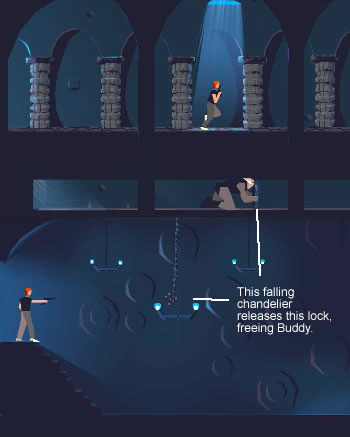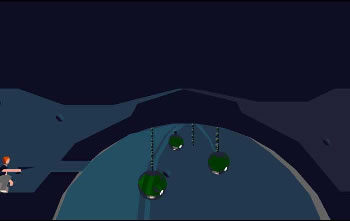3DS Demo Impressions Part #1
April 28th, 2014
Last Christmas, Santa gave me a 3DS. I’d been hoping I’d get a 3DS because Nintendo had their Super Mario 3D Land promotion going, where anyone who registered their system and a copy of 3D Land would get a second game free. A great opportunity to jump on the 3DS bandwagon, and with a new Mario and Zelda game no less. Unfortunately, the eShop was facing connection issues, thanks to the Pokemon Bank outage, so I waited a few days and then downloaded some demos instead. A few months later and I still hadn’t put my notes up onto the blog. So here’s what I played and what I thought:
Metal Gear Solid 3: Snake Eater 3D
- Wow. This game looks amazing in 3D. It seems that the colouring and visuals were modified to make the 3D effect more pronounced. In any case, I noticed snakes, birds, butterflies, and other creatures that weren’t so apparent in the original (maybe more were added?). The 3D also makes it easier to judge the distance between Snake and a guard. Playing Portable Ops Plus for the PSP recently, I would often bump into enemies or attack before I reached them. So I can appreciate this change.
- The camera controls are awful; however, the menus are easier to navigate with the touch screen, and the nestled CQC d-pad commands and other visual prompts remove the need to remember the layers of input complexity that were problematic in the original.
- The other thing about the bottom screen is that it frees up the interface on the top screen while also adding information that is locked behind the pause button in the original. With more intel available, it’s easier to make informed decisions and remain undetected.
- Overall, the 3DS version is a lot cleaner than the original. When I replay the PS2 game later, I’ll have more to say on Snake Eater.
Rayman Origins
Playing in the Shade (console version)
- Visual flourish is valued more than function, and to a fault. This is especially true of Playing in the Shade, where the player must keep wind of a fast-moving target and has less time to read the game world.
- In Playing in the Shade, the strict progression shrinks the space for player expression and puts an emphasis on memorisation and reflex skills.
- In Swinging Caves, there’s a locked cage in a secret room. Later, the same cage appears in the final room, representing the end goal. Given that the first cage is in a seemingly secret room, it’s not clear whether opening either cage ends the level or if only the second cage in the final room ends the level.
- It’s neat how the projectiles in the shmup level can bounce off certain surfaces and how enemies can be sucked up and used as ammo.
- The level arrangements didn’t really gel together or build in any meaningful way, but I’d need to play more of the game to make a clearer statement on this.
- It’s odd how the levels use the 3D effect while the loading screens don’t. The game looks kind of blurry overall.
Denpa Men: They Came By Wave
- I only had enough radio waves in my house to catch two other Denpa Men. This made completing the demo quite tricky.
- There’s far too much automation in the battles. This simple game basically plays itself.
Epic Mickey: Power of Illusion
- Starts off the demo with 5 minutes worth of stills and text, and then another minute of text.
- Adding objects only requires drawing the outline, but removing requires colouring.
- The drawing and erasing mechanics, at least in the demo, are only applicable in pre-set situations to open simple locks and aren’t engaging enough on their own. Zelda: Phantom Hourglass put similar mechanics to better use, with varied and deep applications, years ago.
Castlevania: Lords of Shadow – Mirror of Fate
- No cutscenes or text. Just straight to the gameplay.
- I was originally concerned about the lack of spatial dynamics in the combat, but the jump is high and floaty enough that verticality is significant, and there are enemies that require mid-air attacks.
- The combat is more like a 2D God of War than any of the SOTN-esque games. This is good cause those games were stuffed full of arbitrary systems that didn’t greatly support the core combat.
- To rise above hack and slash convention, though, the whip mechanics should be more dynamic, the secondary weapons should mix up the skill set, and there should be more interplay. For example:
- Physics-based whip swinging. Swinging in the demo is single static move. Momentum could be used to swing through boarded up doorways or to knock enemies over.
- The whip should knock things about in the environment. For example, the lamps at the castle entrance. What about other environmental interactions? How could these interactions be tied into the combat?
- The bomb boomerang adds aiming in 2D space and timed detonation with enemy hit-stun. What about the other secondary weapons?
- I like how blocking at the right time opens up an opportunity to counter. How else can back-and-forth counters be facilitated?
A few thoughts on Another World (iOS)
April 25th, 2014
Another World is considered a classic in the video games industry, and rightfully so. The cinematic, rotoscoped cutscenes and minimalistic storytelling were groundbreaking for its time. The game established a precedence for new forms of storytelling within the medium and was a strong influence on game designers like Hideo Kojima and Fumito Ueda. Its gameplay, strangely enough, doesn’t seem to get talked about much, and having recently beaten the game, it’s clear why. I’m going to let the examples do the talking for this one. You can see the whole game completed in 8 minutes in the video above.
A frequent lack of form fits function
This is the only guard in the game that can destroy terrain with his grenades. His friends, who throw identical-looking grenades, have no such luck. (To be fair, the floor does appear somewhat damaged, but it’s difficult to make out).
Even though the stalagmites are drawn in the same way as the right-hand platform, you can swim through the stalagmites.
Sometimes you die from a few laser blasts; other times you can be continually blasted for 10 seconds and still walk away without a scratch.
On-screen controller and input buffering
Take a classic game that originally used a controller. Now put that controller on the screen and place your fingers on the digital buttons. As is the case for all iOS games with an on-screen game pad, your fingers naturally obscure the action. The limited view is highly problematic in the shooting sequences, where you’re required to read your enemies and react.
The other problem with digital buttons is the lack of tactile feedback. This issue is conflated by the delayed reaction to your inputs (which, from what I can gather, was part of the original game). You would think that the gameplay challenges would have been designed to work around this obvious limitation, but many of the movement and jumping tasks require accuracy within the range of a few pixels. So when put up against such challenges, it’s easier to walk up close to an obstacle and then jump/run ahead of time than trying to jump while you’re still running. With my fingers blocking the screen and my inputs one step behind the game’s visuals, I sometimes felt that it was better to look away from the screen and just internalise the timing through trial and error.
Poor feedback
Shooting this chandelier will release the obstacle in Buddy’s path, which makes no sense at all as only the chandelier itself drops.
Shooting this power line closes a door later on in the game, which briefly protects you from enemy fire. Problem is, the only way to find out about the relationship between these two elements is to have gone on ahead and failed to escape the enemy fire.
One screen below, there’s a guard walking around. You’re meant to cut the rope so that the ball hits the guard on the head and knocks him out. You can’t see the guard, though; and if you miss, you need to restart from the last checkpoint.
I don’t know what these rooms do either.
Frequent checkpoints = fast turn around = no time to reflect on mistakes = more mistakes = more more wasted time
To minimise the effect of the poor feedback and puzzle design, Another World resorts to frequent checkpoints. While it would be nice if the game was free of all the issues listed above (and more), the checkpoints are appropriate. One side effect, though, is that the fast turn around doesn’t give the player time to reflect on their mistakes, which is an important part of understanding and progressing through any game.
Conclusion
I can respect Another World‘s influence on the gaming landscape. It’s apparent from the first few minutes of play that the game is something else. Its similarities with a number of contemporary indie games is also quite remarkable (Iji, Super Meat Boy, Limbo, etc.). Such is a worrying trend, however, that its poor gameplay has been swept under the rug by many commentators. This is a topic that I explore further with Uncharted 2 in Adventures in Games Analysis: Volume 1. Speaking of which, it should be out soon. Hurray for that.











 Game Design Companion: A Critical Analysis of Wario Land 4 - $7.99
Game Design Companion: A Critical Analysis of Wario Land 4 - $7.99 Level Design: Processes and Experiences
Level Design: Processes and Experiences Speed Boost: The Hidden Secrets Behind Arcade Racing Design - $5.99
Speed Boost: The Hidden Secrets Behind Arcade Racing Design - $5.99 Adventures in Games Analysis: Volume I - $5.99
Adventures in Games Analysis: Volume I - $5.99







